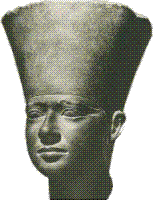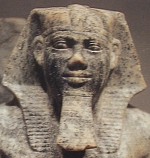|
Dynasty
V does not appear a continuation of the preceding royal lineage,
although an opinion of a link between both dynasties in the form of
queen
Khentkawes, daughter of
Menkaure, is very probable. With no doubt we
have to do with a triumph of Heliopolitan theology. A later story based
on historical events describes circumstances of birth of three first
kings of the Dynasty V. They were supposed to be sons of the god Re from
a village of Sakhebu near Heliopolis by Raweser,
wife of
Redjdjeded, one of priests worshipping the primeval god Re. Under
the Dynasty V the solar cult gained much importance and the rulers,
starting with Sahure, assume the name of
sA-ra - Son of Re. Pyramids, no more as monumental as
under the preceding Dynasty, were built in the close neighborhood of
solar temples. Expeditions to Sinai and Asia, as well as to Libya and
Nubia were sent as previously.
|
||




 He
was of non-royal descent. He acquired right to the throne by marrying the
daughter of
He
was of non-royal descent. He acquired right to the throne by marrying the
daughter of 



 Elder
brother of Neferirkare, son of queen
Elder
brother of Neferirkare, son of queen 













 Son
of pharaoh Neferirkare by queen
Son
of pharaoh Neferirkare by queen 







 Son
of pharaoh Neferirkare by queen
Son
of pharaoh Neferirkare by queen 



















